Cameras and Lenses I Use for Architectural Photography
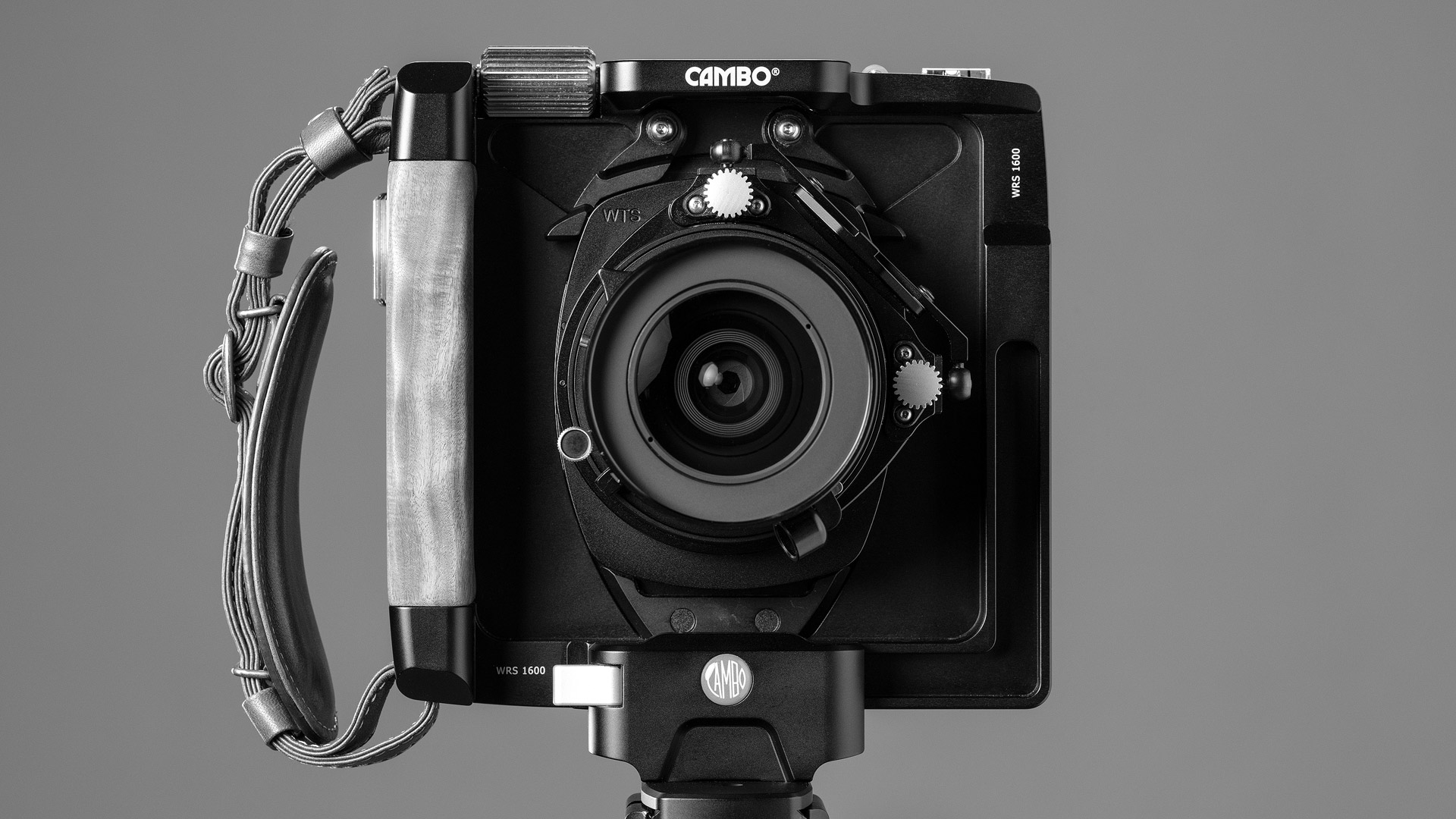
As an architectural photographer, I depend on specialized photography equipment to produce commercial-quality images. While I agree wholeheartedly that creating photographs of architecture and design requires more than just cameras and lenses, the focus of this article will be on the cameras and lenses I am presently using.
Cameras I Use for Architectural Photography
Over the years I’ve worked with a wide variety of cameras and lenses for architectural photography. When choosing a camera, I am looking at resolution, dynamic range, lens options, ease of use, size, weight, and cost. Here are the three different camera systems I am currently using for architectural photography, including pros and cons of each.
Fuji GFX 100S, DSLR Camera
The Fuji GFX 100S is a digital SLR camera with a 102-megapixel medium format sensor. The area of the sensor is 1.7x larger than the full-frame sensors in Canon, Sony, and Nikon cameras. The exceptional image quality of the GFX makes it a popular choice for professional photographers in the field of architecture and commercial photography.
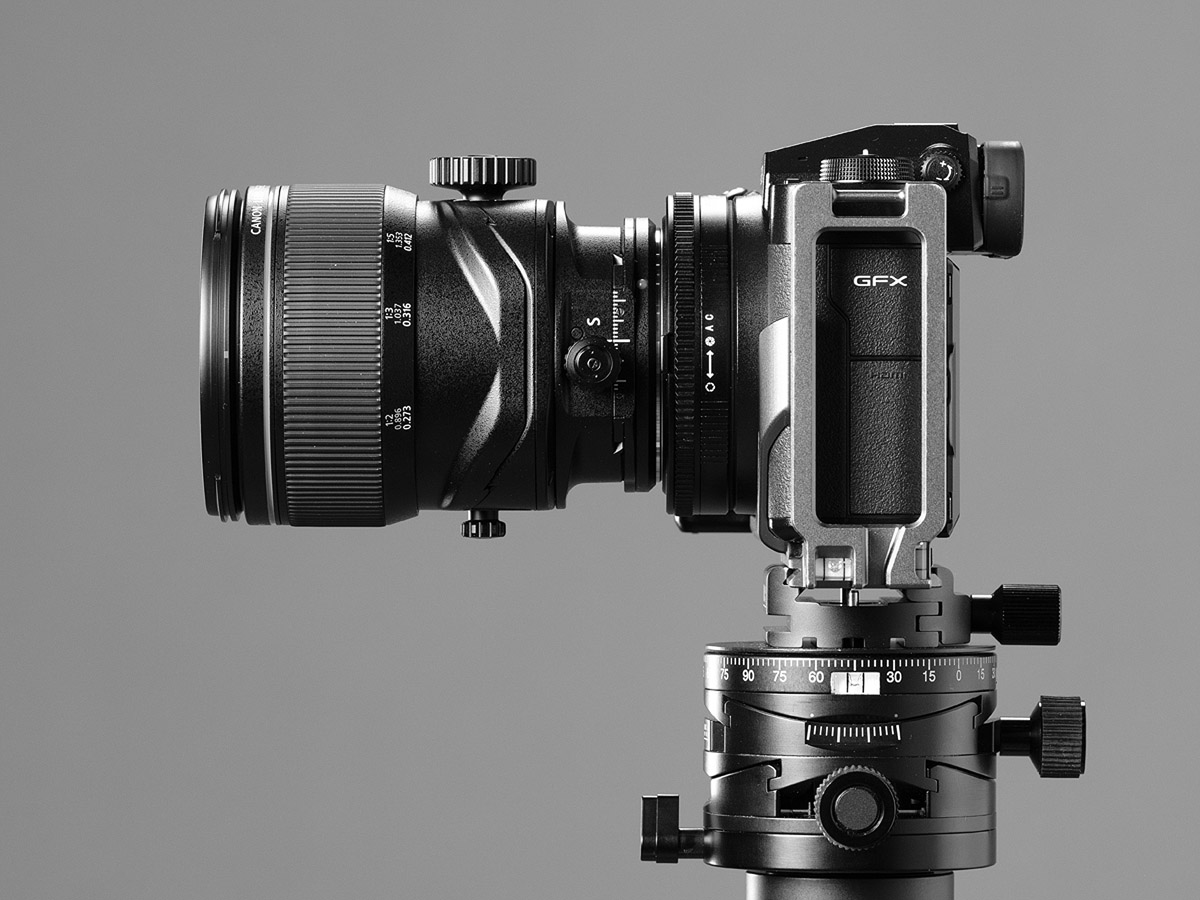
PROS
- Canon and Nikon tilt-shift lenses can be adapted for use with the Fuji GFX 100S
- Tethering with Capture One software for
- high resolution previews to show clients
- on site cropping, color, exposure, and distortion correction
- confirmation that you have your shot before moving on to the next one
- The versatility of a 102 megapixel sensor makes it possible to crop significantly when needed– e.g. a 18”x12” magazine spread printed at 300dpi requires less than ¼ of the overall sensor area
- The GFX is about the same size and weight as other DSLR cameras
- The GFX can be used as a “digital back” on digital view cameras like the Cambo Actus and Arca Swiss F-Line or M-Line
- Built-in mechanical shutter makes it possible to use the GFX with flash lighting equipment
- Full sensor and 35mm crop modes
CONS
- Currently, Fujifilm does not make any tilt-shift lenses for the GFX 100S
- Adapted wide angle tilt-shift lenses like Canon’s TS-E 17mm and TS-E 24mm II struggle to resolve the level of detail available when using a 102 megapixel medium format sensor
In my opinion, even with the cons listed above, the Fuji GFX 100S is the most versatile modern camera available for architectural photography.
Cambo Actus, Digital View Camera
The Cambo Actus is a fascinating camera that was designed for use with modern digital cameras and adapted lenses. It is a compact "view camera" that offers the same range of movements as a conventional 4x5 view camera, making it an attractive alternative to tilt-shift lenses for architectural photographers.
Despite its ability to perform like a traditional view camera, the Cambo Actus is significantly smaller in size. As a result, photographers can achieve the desired perspective corrections and movements without having to carry around a larger, bulkier camera setup.
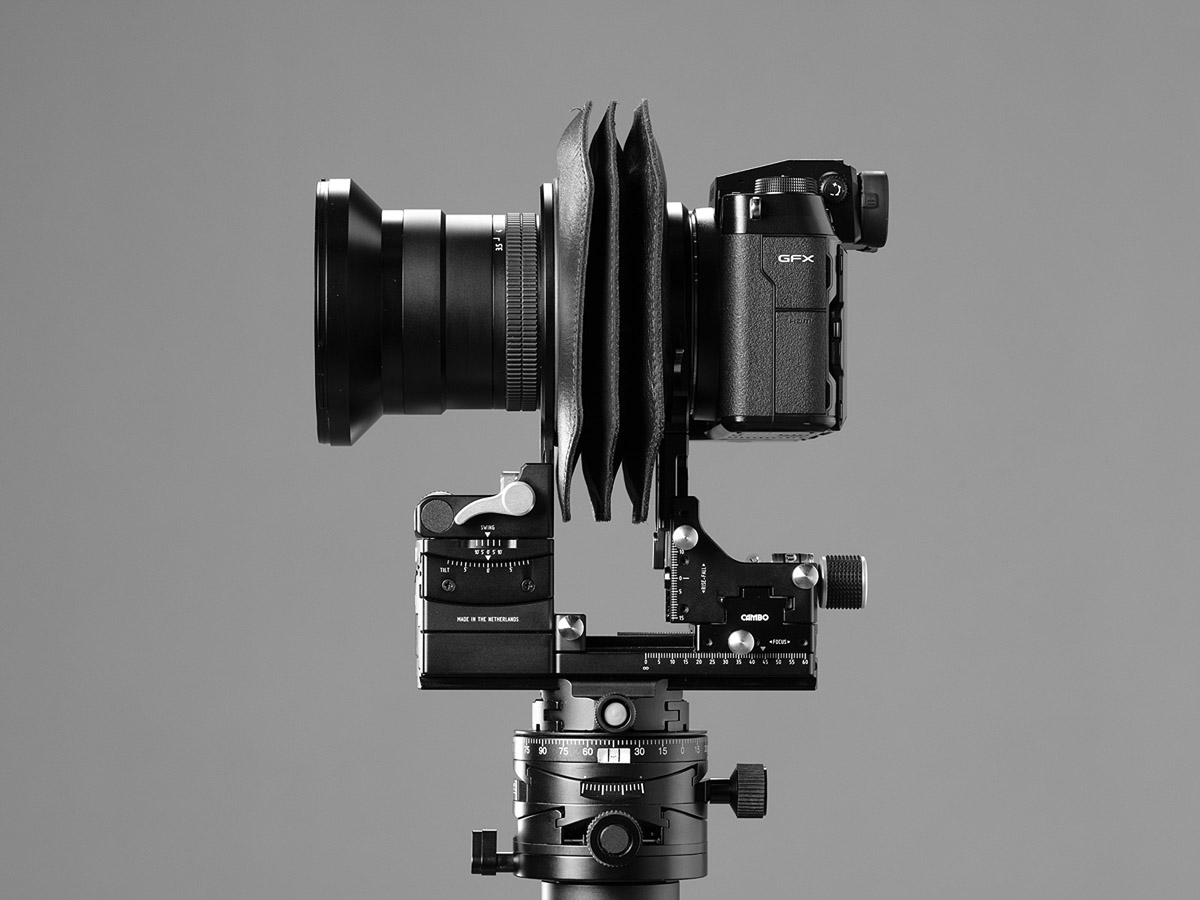
PROS
- Compatible with the Fuji GFX 100S and other digital SLR cameras
- Full range of view camera movements in any combination– e.g. vertical rise and fall, horizontal shift, tilt, and swing
- Lenses remain stationary when using camera movements
- Compatible with a wide range of lenses
- Any lens that is compatible with the Actus becomes a tilt-shift lens
- Small and compact
- Fun to use
CONS
- When using the Actus with a digital SLR camera, wide angle lens options are limited
- It is not possible to use the Fuji GFX 100S with Canon TS-E or Nikon PC lenses on the Cambo Actus
Even though I really enjoy using the Cambo Actus, the inability to combine the GFX 100S with Canon and Nikon perspective correction lenses came very close to being a dealbreaker for me. Actually, I tried out a presale loaner and decided against it. Then two things happened…
A few weeks after testing out the Actus, one came up for sale on a site I frequent. It included the Cambo Actar 35mm lens and was priced to sell. During the same week, Cambo announced a new Actar 20mm lens. Both of these developments made it possible for me to use the Fuji GFX 100S with professional quality wide angle lenses on the Cambo Actus.
Phase One IQ4 150 and Cambo WRS 1600, Digital Back and Technical Camera
The Phase One IQ4 150 digital back is designed to provide the utmost in image quality and resolution. Its 150-megapixel sensor is capable of insanely high resolution detail, 15 stops of dynamic range, and advanced features that no other commercially available camera system duplicates. A digital back makes it possible to use the best wide angle lenses available for architectural photography because the sensor plane is not recessed like it is on a digital SLR camera.
The Cambo WRS 1600 is a flat technical camera system with a modular design. Our IQ4 150 digital back mounts on one side and our Schneider-Kreuznach lenses mount on the other. The Cambo WRS 1600 works by keeping the lens stationary while providing precise movements of the digital back in both horizontal and vertical directions.
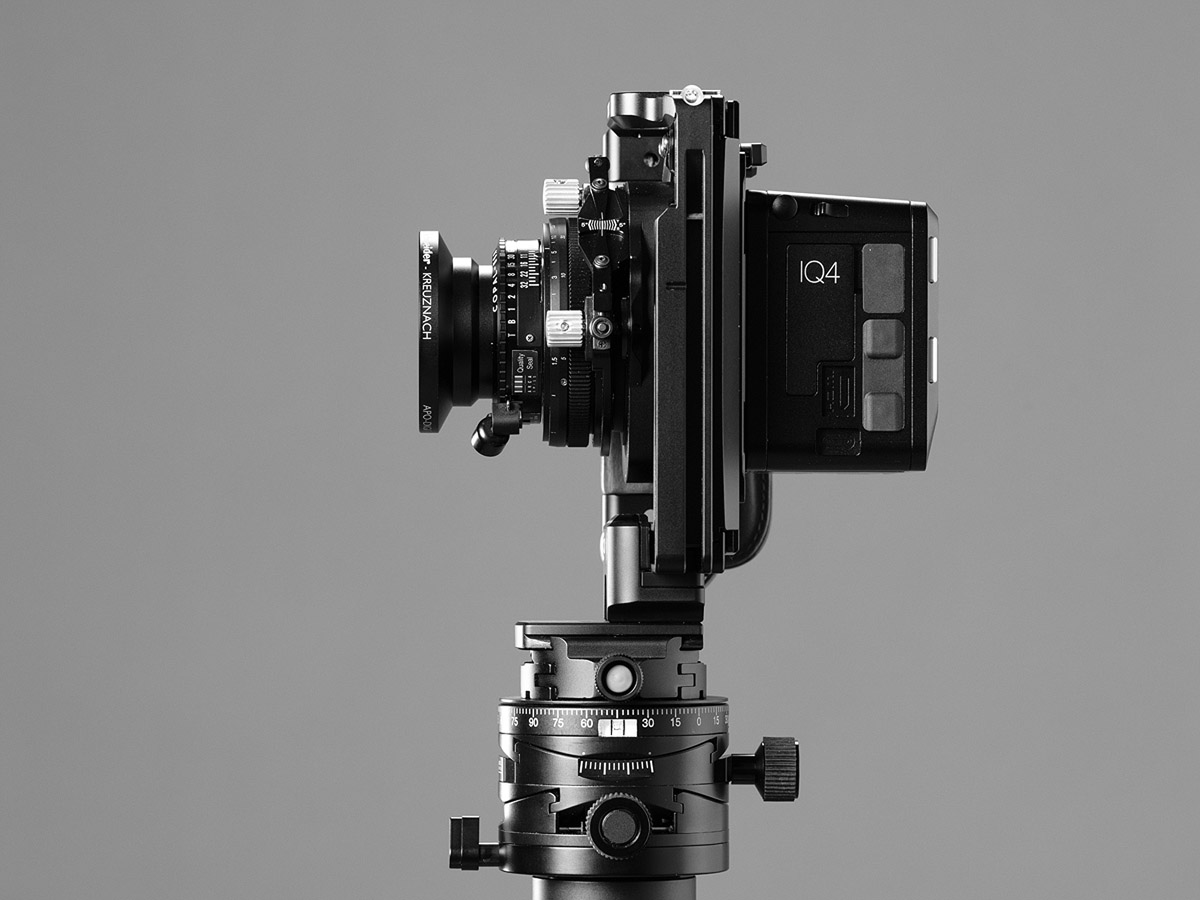
PROS
- Highest resolution digital files available
- Rigid structure
- Panorama stitching with no parallax error
- Compatible with Rodenstock and Schneider-Kreuznach optics, the highest resolving lenses ever made
- Compatible with wide angle lenses made specifically for architectural photography
- Precisely control X/Y camera movements
- Surprisingly compact
- Advanced features like Frame Averaging
- Option for tethering with Capture One software
- Fun to use
CONS
- Expensive
- Schneider lenses are no longer made so they can be very hard to find
- Rodenstock lenses require software to fix lens distortion
- No shutter so flash sync is only available with lenses that have built-in shutters
It took me over two years to put together this technical camera system. Since I am using this system for architecture, I knew I wanted to get Schneider lenses because of their stellar reputation and lack of distortion. The most difficult part of putting together this kit was finding preowned Schneider-Kreuznach lenses for sale because they are no longer manufactured.
Primarily, we use our digital back and technical camera when no flash is required. This means we mostly use it when photographing building exteriors. For this use, the Phase One IQ4 150 digital back and Cambo WRS 1600 technical camera is the ultimate solution for photographing architecture. Nothing else compares.
If you are interested in this type of camera system, the getdpi.com forum has many active members that use technical cameras. Another resource is this in-depth article by Dave Chew, Field Techniques for Technical Cameras .
Lenses I Use for Architectural Photography
In terms of lenses, architectural photographers generally look at angle-of-view, distortion, perspective correction, and image quality. While you can use standard photography lenses and fix perspective distortion in a program like Photoshop, I would rather use a lens that allows me to fix this issue in camera.
Each of the camera systems listed above use different lenses. Included in this section are pros and cons of each based on my experiences.
DSLR Tilt Shift Lenses
A tilt-shift lens is a specialized lens that allows photographers to control the plane of focus and perspective of the image. These lenses are particularly useful for architectural photography, where control over the perspective is essential.
Canon and Nikon tilt-shift lenses are popular among architectural photographers. We currently use the following Canon lenses with our Fuji GFX 100S:
- Canon TS-E 17mm
- Canon TS-E 24mm II
- Canon TS-E 50mm Macro
- Canon TS-E 90mm Macro
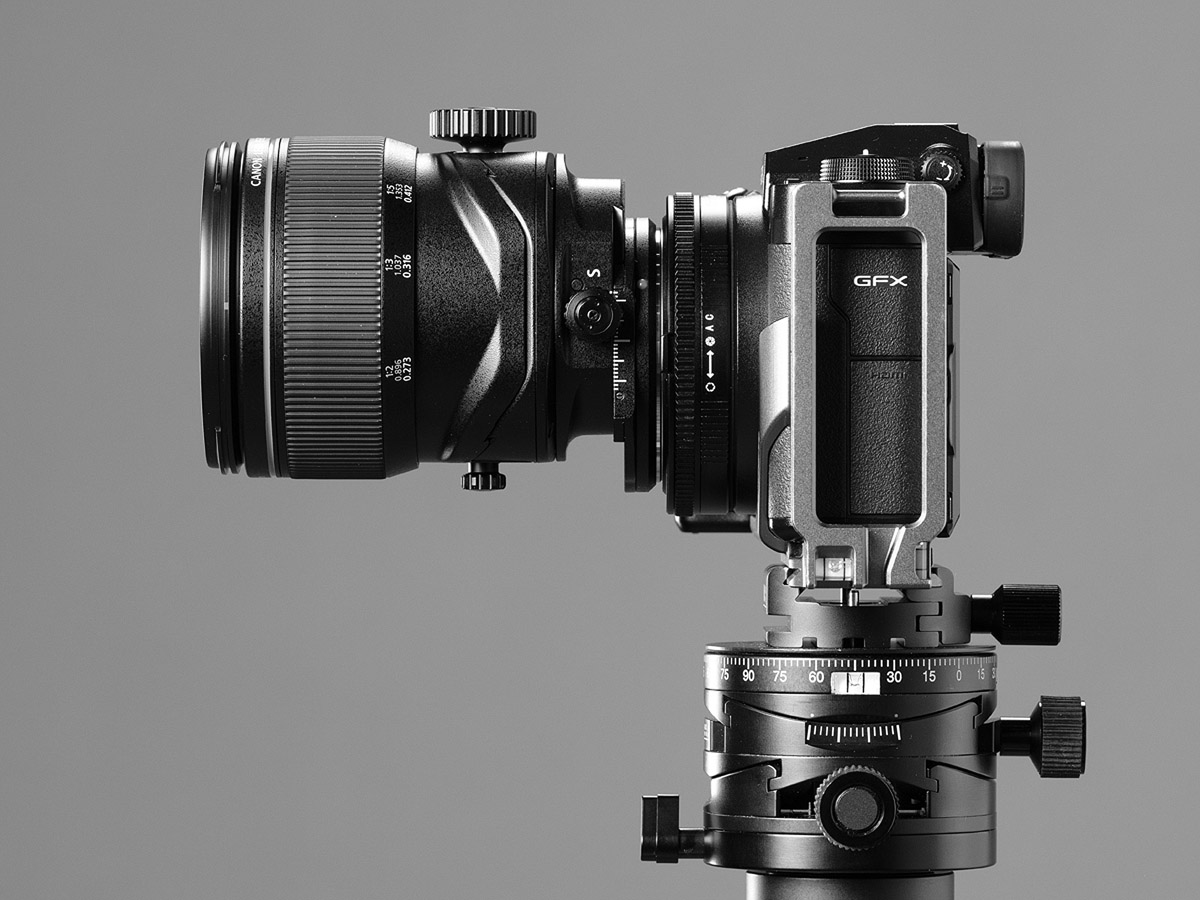
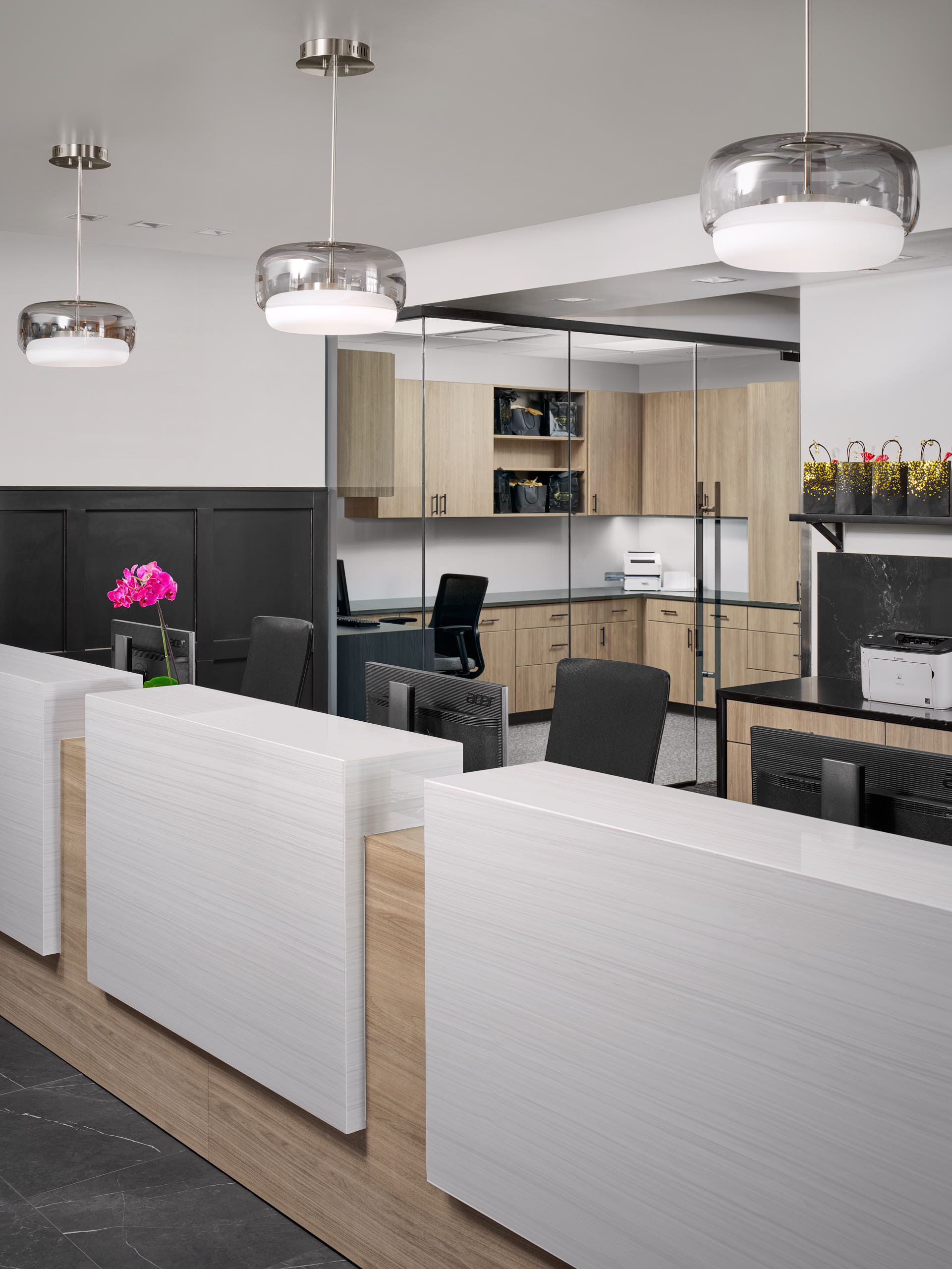
PROS
- Readily available
- Extreme wide angle option
- Image circle is large enough for movements on medium format sensors
- Can be adapted to GFX 100S
- Professional quality
CONS
- Can only shift in one direction– vertical, horizontal, or diagonal
- Lower image quality than technical camera lenses
- Gap between 24mm and 50mm focal length
You may have noticed that Canon has a big gap in their lens lineup between the 24mm and 50mm focal lengths. For years, architectural photographers have been wishing for this gap to be filled. Fuji is reportedly coming out with a new 30mm TS lens that should do a wonderful job, but it is not available at this time.
In the GFX's 35mm crop mode, all the Canon lenses deliver professional outcomes, while in the full medium format sensor of the GFX, the 50mm and 90mm lenses perform impressively, but the 17mm and 24mm lenses display some weakness in the corners. This is not surprising, as the wider lenses are older designs that were initially intended for lower resolution 35mm cameras.
Digital View Camera Lenses
The beauty of the Cambo Actus digital view camera is the ability to adapt a wide range of lenses. While it is possible to adapt many different lenses for use on the Actus, these are the lenses we’ve found that work well for architectural photography:
- Cambo Actar 20mm (Laowa 20mm f/4 Zero-D Shift - Retrofit)
- Cambo Actar 35mm (Contax 645 Distagon T* 3.5/35 - Retrofit)
- Mamiya 6 50mm (coming soon)
- Mamiya 6 75mm (coming soon)
- Pentax 645 75mm
- Schneider APO-Digitar 90mm
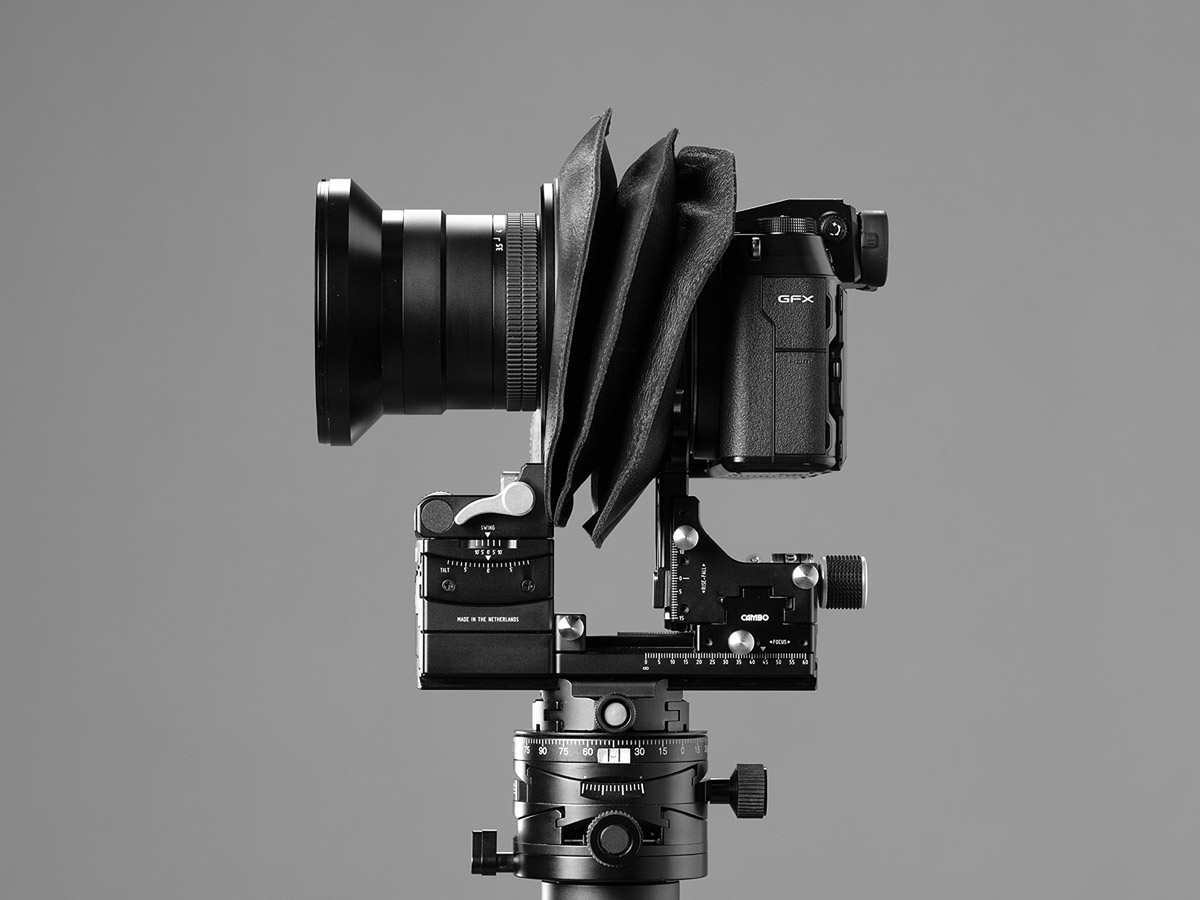
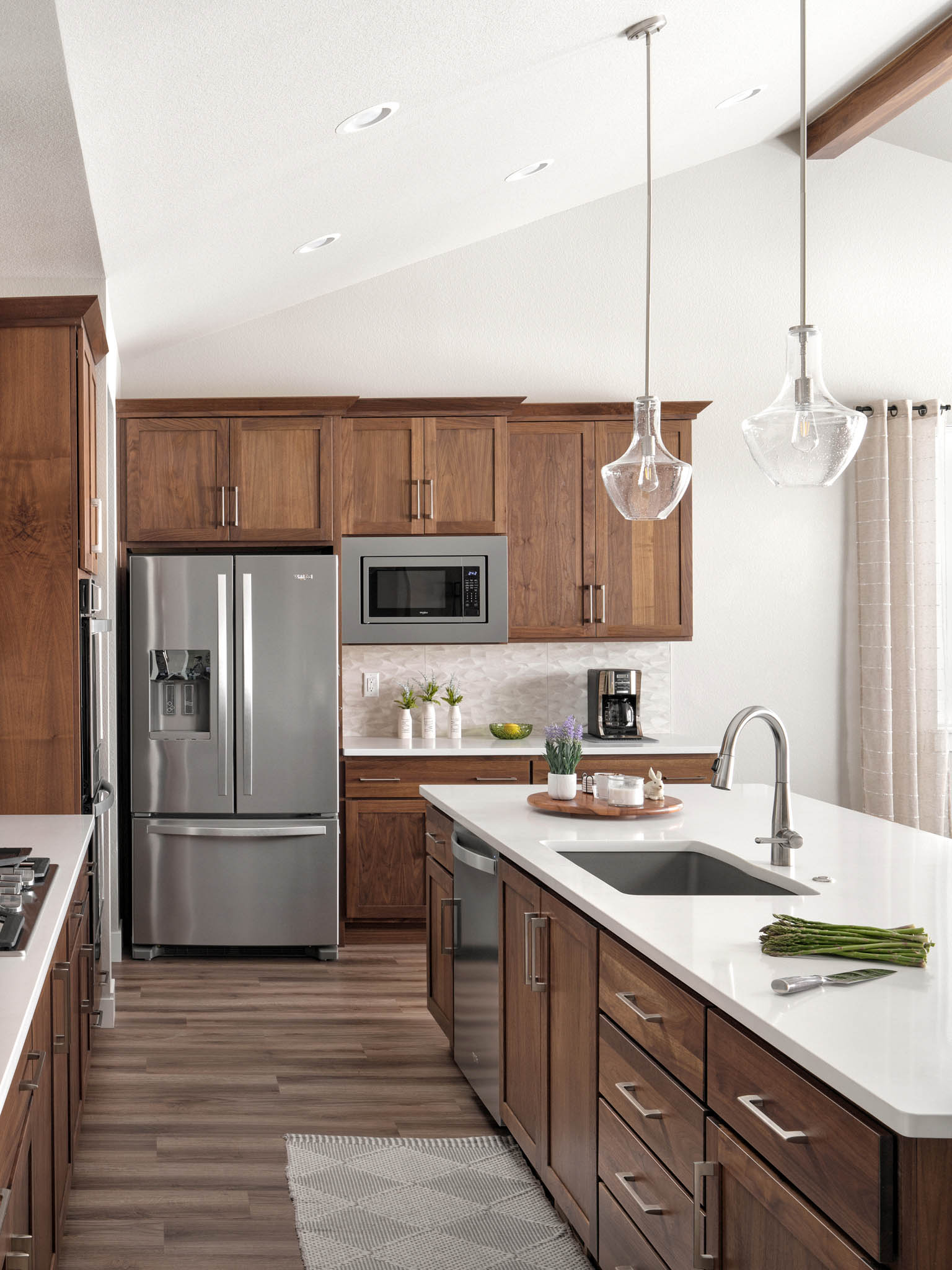
PROS
- 35mm focal length is available
- Can be used with the Cambo Actus and Fuji GFX 100S
- Large image circle that allows significant camera movements, even on the GFX’s medium format sensor
- Manual aperture control
- Very low distortion
- Lenses are more compact than Canon TS-E lenses
- Professional quality
CONS
- Cambo Actar 35mm requires software lens profiles to control distortion
- Like Canon TS-E lenses, these lenses do not have the same resolving power as technical camera lenses
- Gap between 35mm and 75mm focal lengths
In the 35mm focal length, there are only two viable lens options for architectural photography on the Cambo Actus– the Actar 35mm and the Pentax 645 35mm. The Pentax is a high quality lens and has a large enough image circle to accommodate camera movements, but there is no way to fix the lens distortion with software. For me, the Actar 35mm wins out because Capture One has built in profiles to help fix distortion when using this lens.
Currently, I don’t have a 50mm focal length option for the Cambo Actus. Although I do have a Mamiya 6 50mm lens that is currently being modified to fill this gap. If it compares to the Canon TS-E 50mm Macro I’ll be very happy. When it comes in, and I’ve had a chance to test it, I’ll report my findings here.
Technical Camera Lenses
Architectural photographers consider the Schneider-Kreuznach APO Digitar series the ultimate lens collection. Most technical camera lenses intended for digital backs are exceptionally sharp with expanded image circles that allow for camera movements.
However, the key reason why architectural photographers prefer Schneider lenses over other technical camera lenses is their compact size, lightweight, and negligible distortion. Being virtually free of distortion eliminates the need for additional post-processing work to fix barrel, pincushion, or complicated mustache distortion, which is a distinct advantage over other technical camera lenses.
In my opinion, these are the best lenses available for architectural photography, and the ones I use:
- Schneider 28mm f/5.6 Super Digitar XL
- Schneider 35mm f/5.6 Apo-Digitar XL
- Schneider 43mm f/5.6 Apo-Digitar XL
- Schneider Apo-Digitar 60mm f/5.6 XL
- Schneider 120mm f/5.6 APO-Digitar ASPH
- Schneider 180mm f/5.6 Apo Digitar T
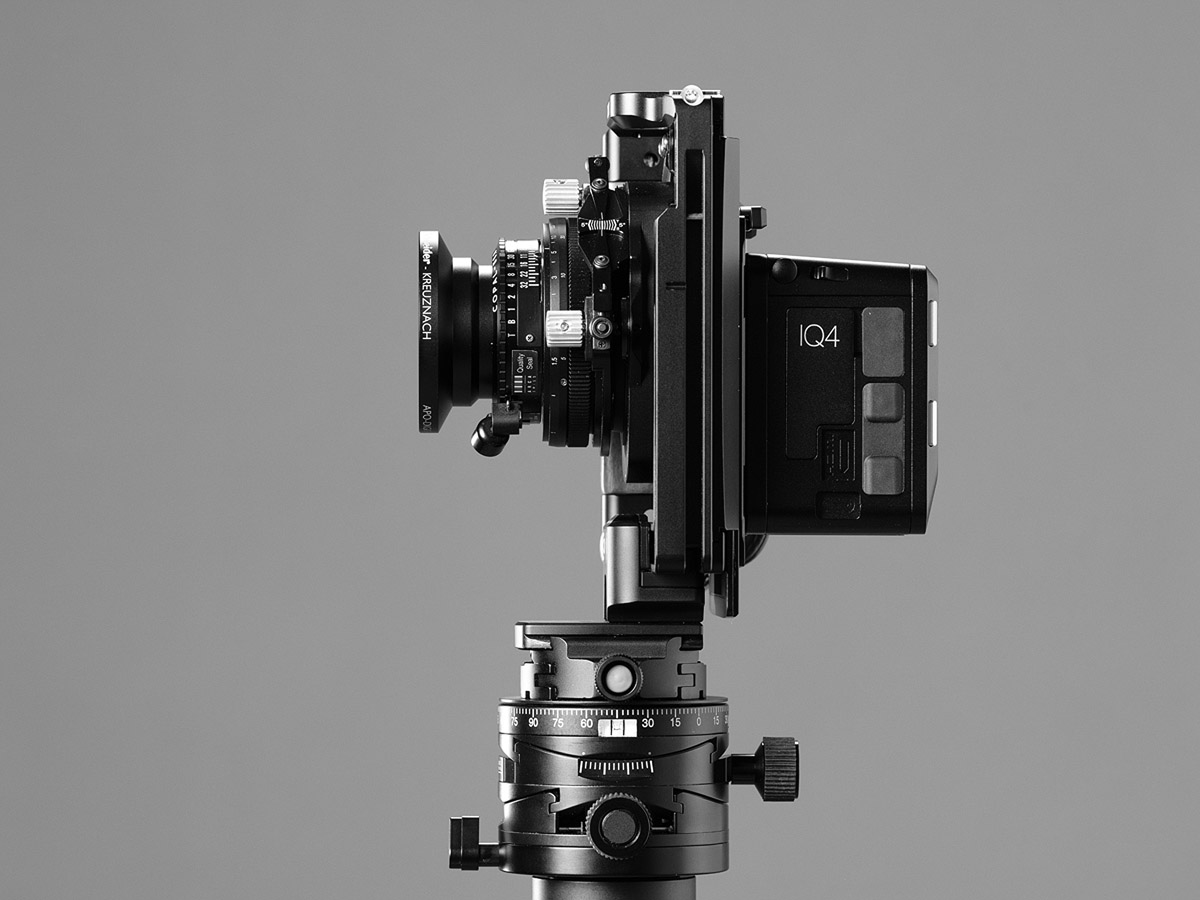
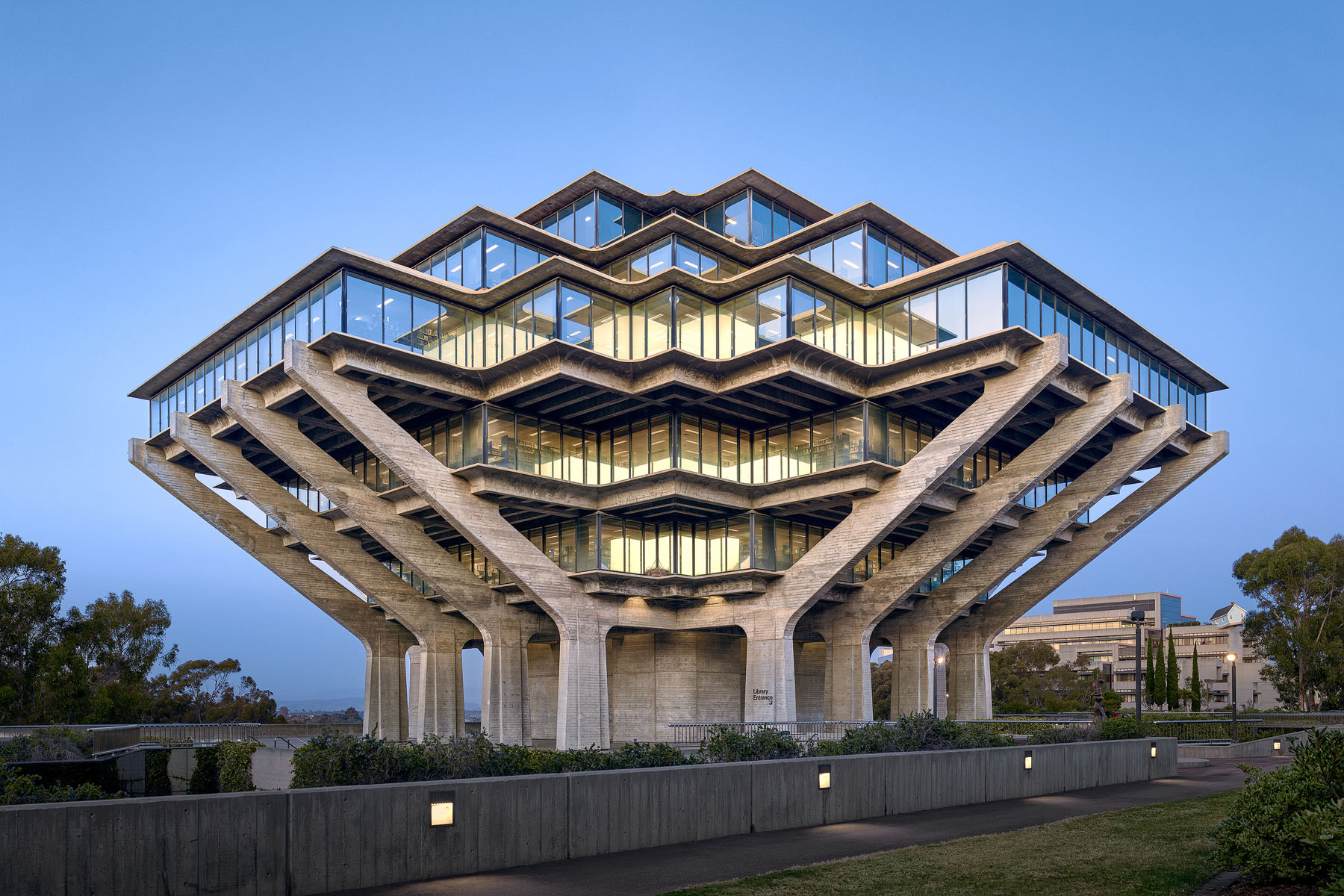
PROS
- Incredible sharpness and clarity
- Small and lightweight
- Large image circles for camera movements
- Ability to stitch multiple shots into supersized panoramic images with edge to edge sharpness
- Satisfying to work with
CONS
- Difficult to find because they are no longer manufactured
- Expensive
- 43mm and wider require center filters to even out light fall-off
- 60mm and wider require LCC capture to fix lens cast
Although it is possible when shooting interiors to use a digital back and technical camera lens with flash. In my opinion it’s just not as practical as using the GFX with tilt-shift lenses or mounted on a digital view camera.
When photographing exteriors though, there simply is no other way I would rather do it. Using the technical camera is a slow and deliberate process that produces the best results for me.
Conclusion
Hopefully, this article will help you decide which camera system is best for your architectural photography.
For me, the versatility of the GFX 100S and it’s 102-megapixel sensor make it a definite keeper. I’m still deciding whether to keep the Cambo Actus because its view camera movements make it an attractive alternative to DSLR tilt-shift lenses. While the Cambo WRS 1600 technical camera combined with the Phase One IQ4 150 digital back and Schneider lenses is overkill for most architectural photography projects, I also use it for the landscape photography prints sold through my website.
Ultimately, these three camera systems come with their own advantages and disadvantages. Your choice of camera and lens should depend on your needs and preferences, as well as the specific demands of the projects you typically shoot.

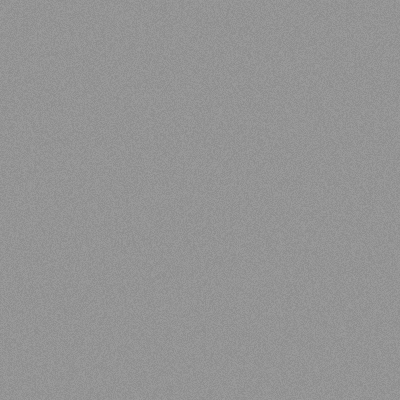 Fashion Gray
Fashion Gray Crimson
Crimson Deep Yellow
Deep Yellow Tech Green
Tech Green Black
Black Purple
Purple Blue Jean
Blue Jean Blue Jay
Blue Jay Orange
Orange Primary Red
Primary Red Super White
Super White